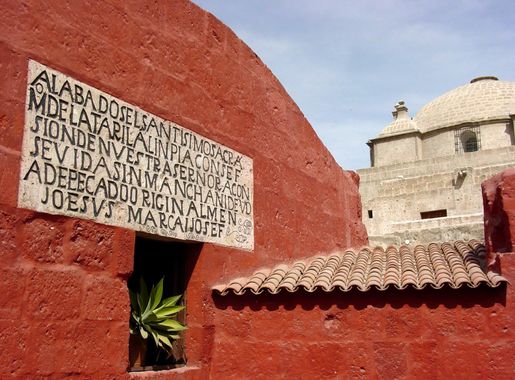
Arequipa: The White City of Peru
Discover Arequipa, Peru's stunning 'White City' nestled between volcanoes and overflowing with history, vibrant culture, and breathtaking landscapes.
Arequipa, known as the 'White City' due to its stunning colonial-era buildings made from sillar, a white volcanic stone, is a gem in southern Peru. Nestled at the foot of three majestic volcanoes, including the towering El Misti, Arequipa offers a unique blend of natural beauty and rich history that captivates all who visit. The city’s historic center, a UNESCO World Heritage Site, is a labyrinth of cobblestone streets, beautiful churches, and grand plazas. The Santa Catalina Monastery, with its vivid colors and serene courtyards, feels like a city within a city and is a must-visit. Arequipa’s main square, Plaza de Armas, boasts a grand cathedral and is surrounded by charming cafes and restaurants where you can savor traditional Peruvian dishes. Arequipa is also the gateway to the breathtaking Colca Canyon, one of the deepest canyons in the world. Here, you can witness the majestic flight of the Andean condor and explore picturesque villages that have preserved their indigenous culture. Whether you are a history buff, a nature lover, or a culinary enthusiast, Arequipa promises an unforgettable experience.
Local tips in Arequipa
- Visit the Santa Catalina Monastery early in the morning to avoid crowds and enjoy the peaceful atmosphere.
- Take a guided tour to the Colca Canyon to learn about the local culture and spot the Andean condors.
- Try the local dish 'rocoto relleno' at one of the traditional picanterias in the city.
- Wear comfortable walking shoes as the city’s cobblestone streets can be uneven.
- Check out the local markets for unique handmade crafts and souvenirs.
- Stay hydrated and take it easy on your first day to acclimate to the altitude.
Neighbourhoods in Arequipa
Arequipa: The White City of Peru
Arequipa, known as the 'White City' due to its stunning colonial-era buildings made from sillar, a white volcanic stone, is a gem in southern Peru. Nestled at the foot of three majestic volcanoes, including the towering El Misti, Arequipa offers a unique blend of natural beauty and rich history that captivates all who visit. The city’s historic center, a UNESCO World Heritage Site, is a labyrinth of cobblestone streets, beautiful churches, and grand plazas. The Santa Catalina Monastery, with its vivid colors and serene courtyards, feels like a city within a city and is a must-visit. Arequipa’s main square, Plaza de Armas, boasts a grand cathedral and is surrounded by charming cafes and restaurants where you can savor traditional Peruvian dishes. Arequipa is also the gateway to the breathtaking Colca Canyon, one of the deepest canyons in the world. Here, you can witness the majestic flight of the Andean condor and explore picturesque villages that have preserved their indigenous culture. Whether you are a history buff, a nature lover, or a culinary enthusiast, Arequipa promises an unforgettable experience.
When is the best time to go to Arequipa?
Iconic landmarks you can’t miss
Plaza de Armas Arequipa
Discover the vibrant heart of Arequipa at Plaza de Armas, a historical landmark surrounded by stunning architecture and rich culture.
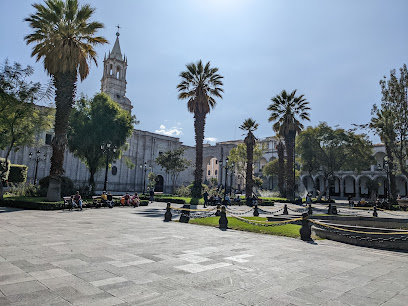
Yanahuara Scenic Overlook
Experience the breathtaking vistas of Yanahuara Scenic Overlook, a perfect blend of natural beauty and cultural charm in Arequipa, Peru.
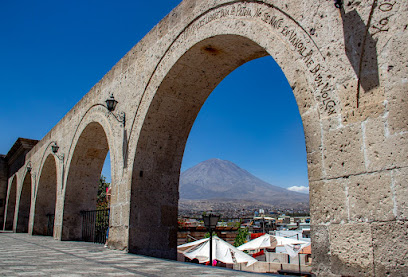
Santa Catalina Monastery
Experience the serene beauty and rich history of Santa Catalina Monastery, a vibrant sanctuary in Arequipa that captivates every visitor.
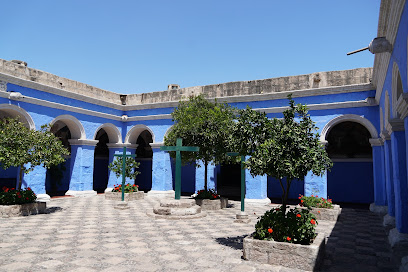
Sabandía mill
Explore the historic Sabandía Mill in Arequipa, a serene escape showcasing Peru's rich agricultural heritage amidst breathtaking landscapes.
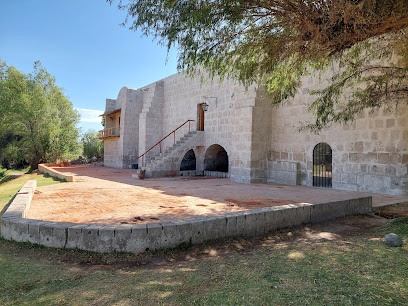
Plaza de Yanahuara
Explore the scenic beauty and cultural richness of Plaza de Yanahuara, Arequipa's iconic park with stunning views and vibrant local life.

Puente Grau
Discover the architectural beauty and historical significance of Puente Grau, a beloved bridge in Arequipa showcasing stunning views and local culture.
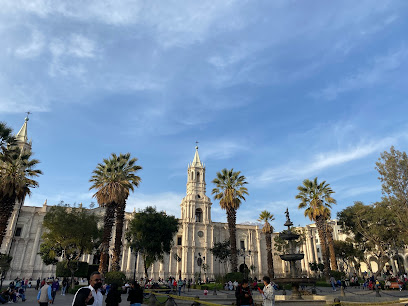
Chaqchao Chocolates
Indulge in the rich and artisanal flavors of Chaqchao Chocolates, Arequipa's premier chocolate shop and café for a sweet experience.
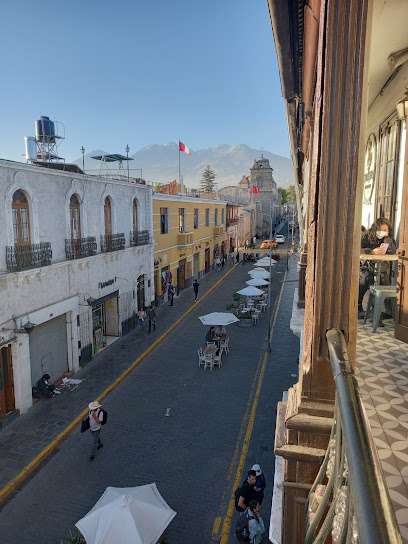
Mercado San Camilo
Discover the heart of Arequipa at Mercado San Camilo, a vibrant market full of fresh produce, local delicacies, and artisan crafts.
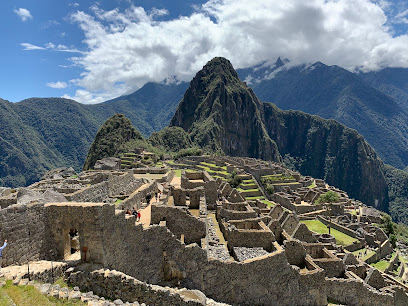
Tradición Arequipeña
Savor the authentic flavors of Arequipa at Tradición Arequipeña, where tradition meets taste in every delightful dish.
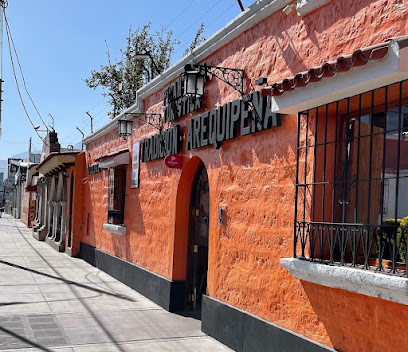
Tipika Tourist Restaurant
Experience the authentic flavors of Peru at Tipika Tourist Restaurant, a culinary gem in Arequipa's Vallecito district.
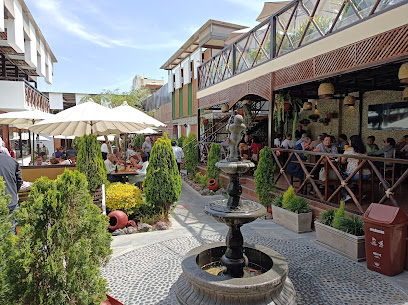
Zig Zag
Experience the flavors of Arequipa at Zig Zag, a top-rated restaurant offering a unique blend of traditional and modern Peruvian cuisine.
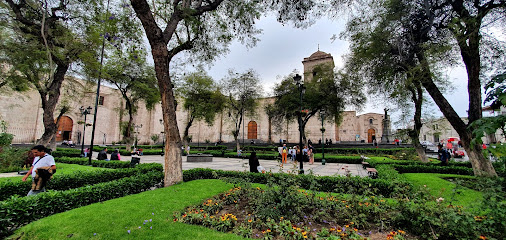
Chicha por Gaston Acurio
Discover the essence of Peruvian cuisine at Chicha por Gaston Acurio, where every dish tells a story of tradition and flavor in Arequipa.

Cloisters of The Company
Explore the Cloisters of The Company in Arequipa - a serene escape filled with stunning baroque architecture and rich cultural heritage.
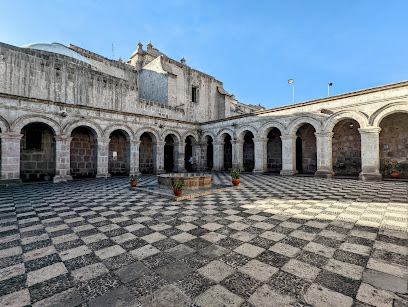
Basilica Cathedral of Arequipa
Discover the architectural beauty and spiritual heritage of Arequipa at the Basilica Cathedral, a stunning symbol of the city's rich history.
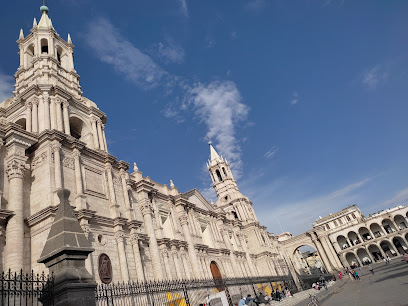
Mundo Alpaca
Discover the vibrant world of alpaca textiles at Mundo Alpaca, a cultural gem in Arequipa, Peru, showcasing exquisite craftsmanship and authentic Peruvian heritage.
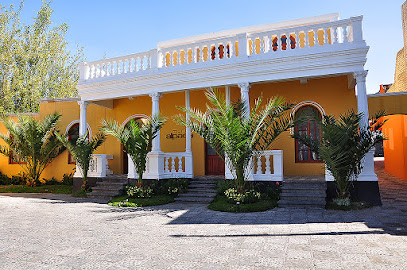
Unmissable attractions to see
Plaza de Armas Arequipa
Explore the vibrant Plaza de Armas in Arequipa, a historic square surrounded by stunning architecture and rich cultural experiences.

Santa Catalina Monastery
Explore the historical beauty of Santa Catalina Monastery in Arequipa, a serene sanctuary showcasing stunning architecture and rich cultural heritage.
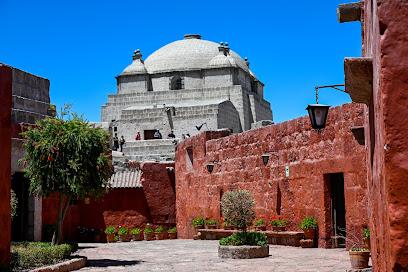
Sabandía mill
Discover the historical beauty of Sabandía Mill in Arequipa, a preserved colonial site showcasing traditional milling processes in a stunning landscape.
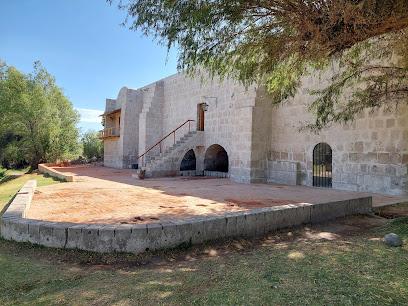
Plaza de Yanahuara
Experience the breathtaking views and rich culture at Plaza de Yanahuara, a picturesque park in Arequipa, Peru, perfect for relaxation and exploration.
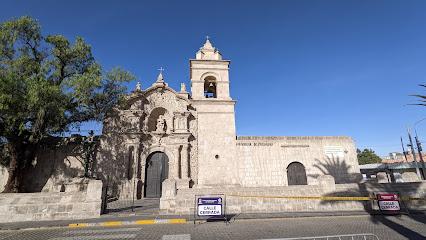
Puente Grau
Explore the historical Puente Grau in Arequipa, a stunning bridge offering breathtaking views and a glimpse into the city's rich cultural heritage.
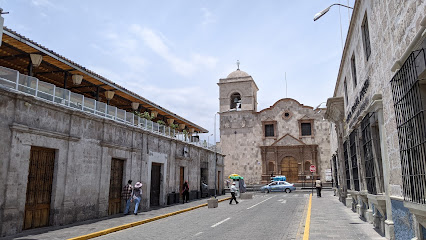
Carmen Alto viewpoint
Discover the stunning vistas of the Carmen Alto Viewpoint in Cayma, a perfect spot for nature lovers and photographers alike.
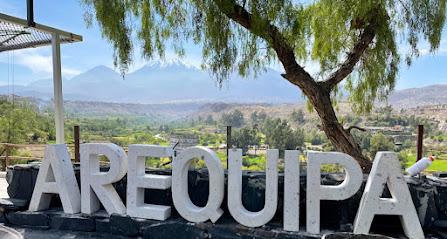
Reserva Nacional de Salinas y Aguada Blanca
Discover the stunning landscapes and diverse wildlife of the Reserva Nacional de Salinas y Aguada Blanca in Arequipa, Peru – a nature lover's paradise.

Canteras de sillar Añashuayco
Discover the beauty of Canteras de Sillar Añashuayco, an ancient quarry in Cerro Colorado, famous for its stunning volcanic stone and breathtaking landscapes.
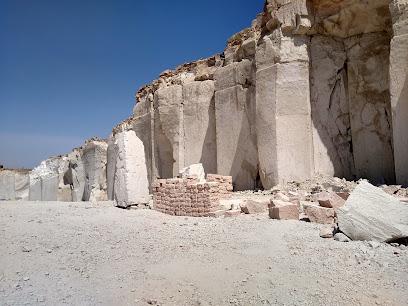
Basilica Cathedral of Arequipa
Discover the architectural beauty and historical significance of the Basilica Cathedral of Arequipa, a must-see landmark in Peru's white city.
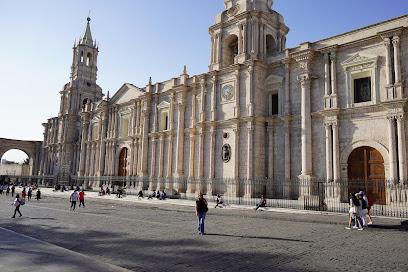
Mundo Alpaca
Discover the elegance of Peruvian alpaca textiles at Mundo Alpaca in Arequipa, a boutique that embodies artisan craftsmanship and cultural heritage.
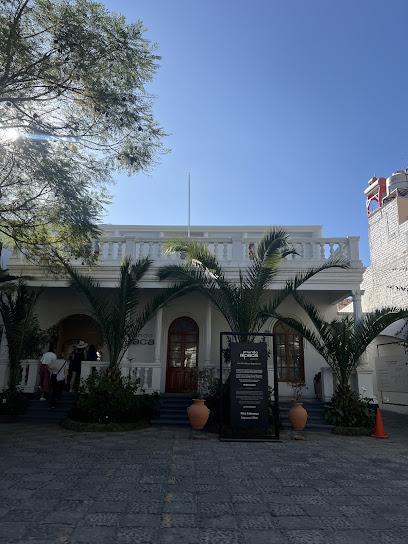
Museo Santuarios Andinos
Discover the Inca legacy at Museo Santuarios Andinos, an archaeological gem in Arequipa showcasing ancient artifacts and fascinating history.

La Mansión del Fundador
Explore La Mansión del Fundador in Jacobo Hunter - a unique blend of adventure sports and cultural heritage awaits you.
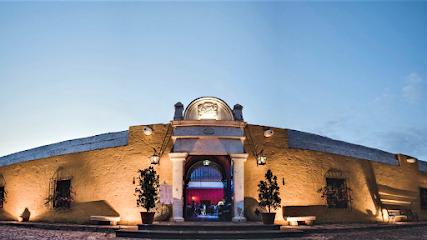
Mirador de Sachaca.
Discover breathtaking views and serene landscapes at Mirador de Sachaca, the perfect observation deck for nature lovers and photographers in Peru.
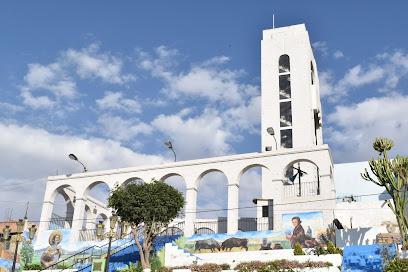
Aquatic Park Tingo
Experience thrilling water slides and family fun at Aquatic Park Tingo, Arequipa's premier water park for adventure seekers and relaxation.
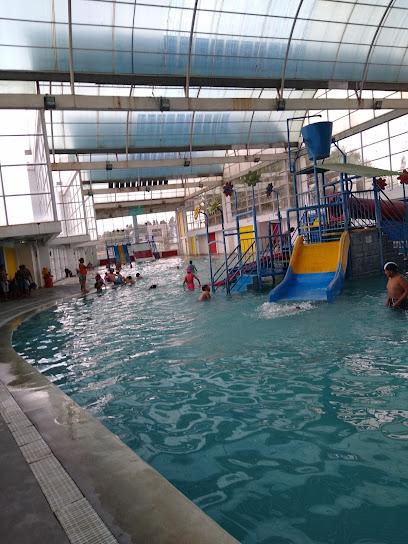
Church of La Merced
Discover the architectural beauty and cultural significance of Arequipa's Church of La Merced, a must-see landmark for every traveler.
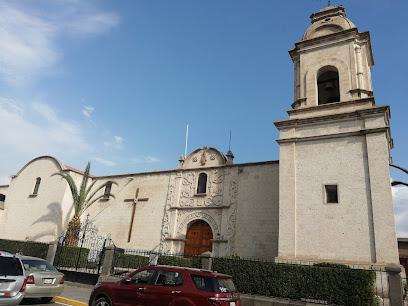
Essential places to dine
La Nueva Palomino
Experience authentic Peruvian cuisine at La Nueva Palomino in Yanahuara—where every dish tells a story.
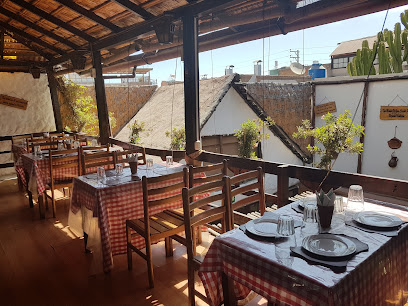
Tradición Arequipeña
Experience authentic Arequipeña cuisine at Tradición Arequipeña – where tradition meets flavor in every bite.
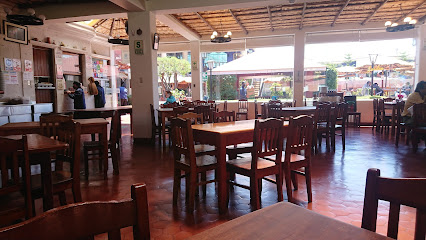
Tipika Tourist Restaurant
Experience authentic Peruvian cuisine at Tipika Tourist Restaurant in Arequipa; savor traditional dishes made from fresh local ingredients.
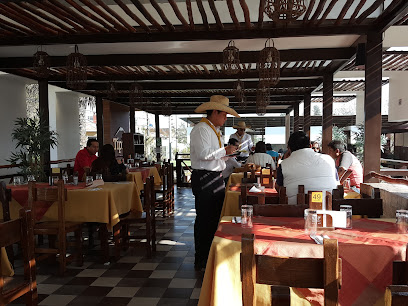
Zig Zag
Discover Zig Zag in Arequipa for a unique culinary experience showcasing Peru's rich flavors through innovative cooking techniques.
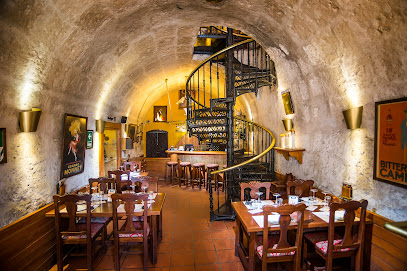
Chicha por Gaston Acurio
Experience authentic Peruvian cuisine at Chicha by Gaston Acurio in Arequipa - where tradition meets culinary excellence.
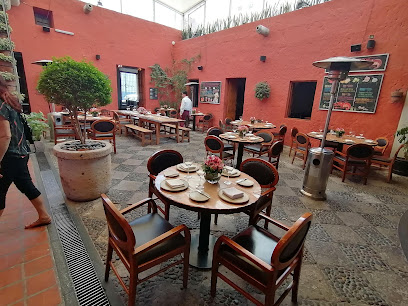
El Montonero - Restaurant Turístico
Experience the rich flavors of traditional Peruvian cuisine at El Montonero in Arequipa - a culinary gem offering authentic dishes and warm hospitality.
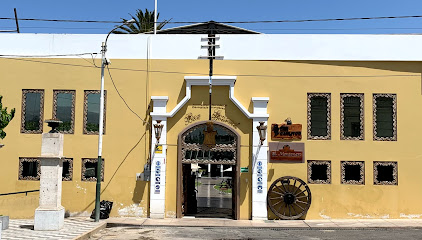
Las Gringas Pizza
Discover the taste of Arequipa at Las Gringas Pizza - where authentic flavors meet modern twists in every slice.
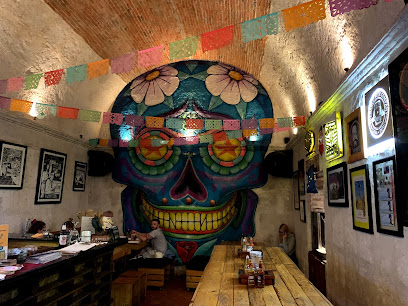
13 MONJAS
Experience the rich flavors of Peru at 13 Monjas – where tradition meets modern culinary artistry in Arequipa.
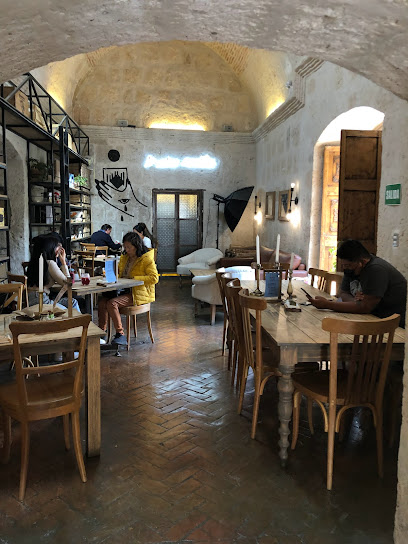
Pasta Canteen
Discover Pasta Canteen in Arequipa - where authentic Italian flavors meet local charm for an unforgettable dining experience.
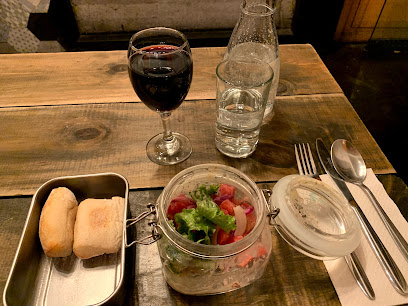
Astoria
Discover the authentic flavors of Arequipa at Astoria Restaurant - where tradition meets modern culinary excellence.
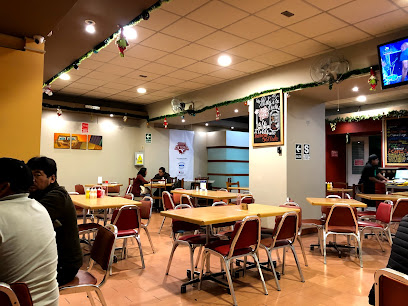
Sol de Mayo
Experience authentic Peruvian cuisine at Sol de Mayo in Yanahuara – where tradition meets flavor in every dish.
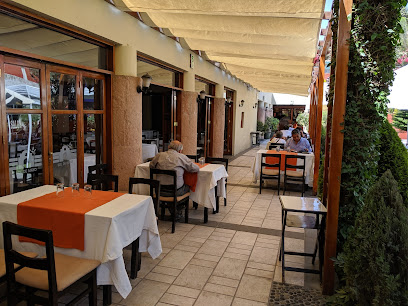
Omphalos Restaurant Vegetariano -Vegano
Discover the vibrant flavors of vegetarian and vegan cuisine at Omphalos Restaurant in Arequipa, Peru - a culinary gem for health-conscious travelers.
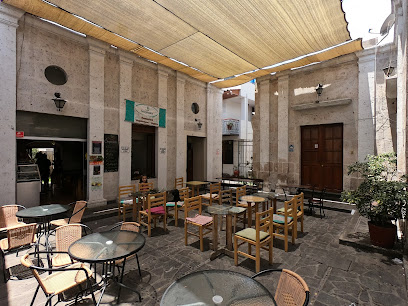
La Benita de los Claustros
Experience authentic Peruvian cuisine in a historic setting at La Benita de los Claustros in Arequipa.
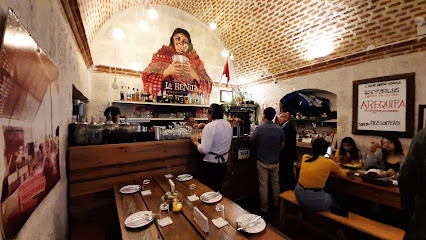
Victoria - Picantería democrática
Experience authentic Peruvian cuisine at Victoria - Picantería democrática in Arequipa; where tradition meets flavor in every dish.
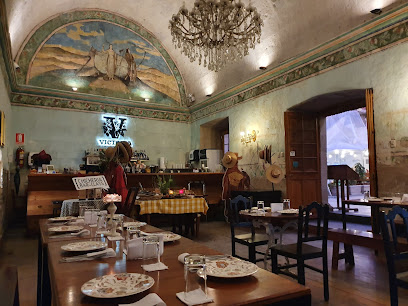
Callejón Ugarte
Discover authentic Peruvian flavors at Callejón Ugarte, Arequipa's must-visit restaurant for a true taste of local cuisine.
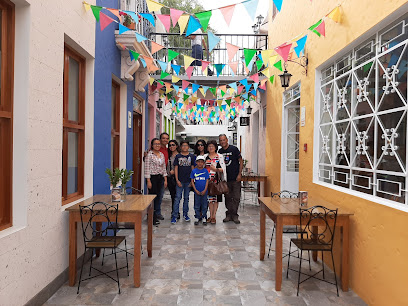
Markets, malls and hidden boutiques
Parque Lambramani
Explore Parque Lambramani in Arequipa: a vibrant shopping mall with diverse stores, delightful dining, and engaging entertainment for tourists and locals alike.
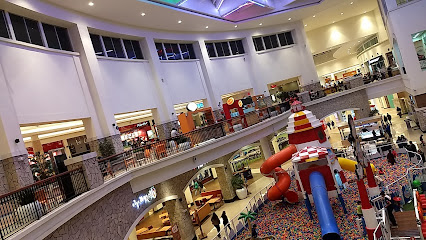
Mundo Alpaca
Experience the rich tapestry of Peruvian culture at Mundo Alpaca, where exquisite alpaca textiles come to life in the heart of Arequipa.
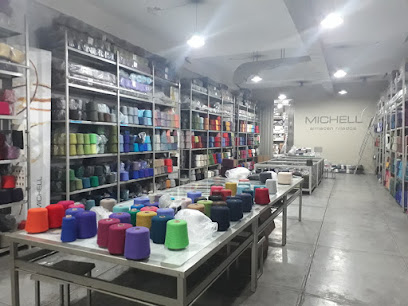
GALERIA DE IMPORTACIONES ASIA AREQUIPA
Immerse yourself in Arequipa's culture at Galeria de Importaciones Asia, a vibrant shopping center filled with local crafts, cuisine, and unique finds.
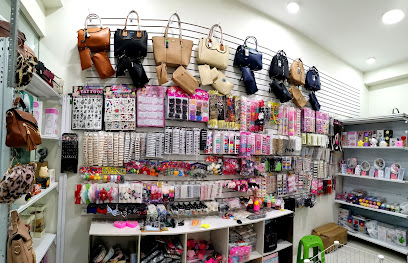
Galería Colonial
Discover unique Peruvian crafts and souvenirs at Galería Colonial in Arequipa, a perfect blend of history and modern shopping.
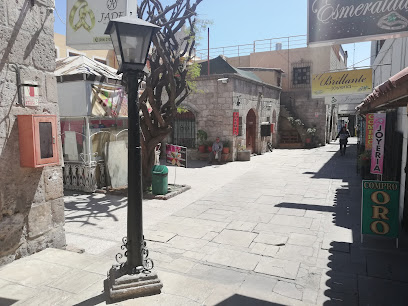
Lambramani
Explore Lambramani, Arequipa's vibrant shopping mall, blending local treasures with international brands in a lively atmosphere.
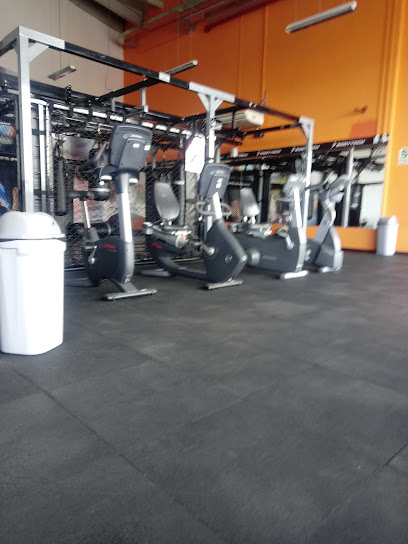
KUNA - Arequipa - Casona Santa Catalina
Discover authentic Peruvian fashion at KUNA in Arequipa, where traditional textiles meet modern design in a unique shopping experience.
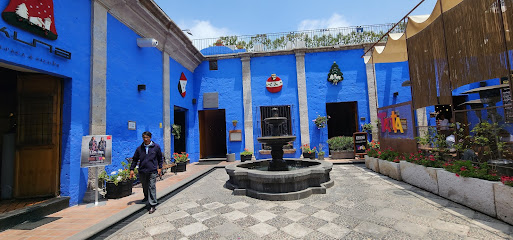
Akira Otaku Shop
Explore Akira Otaku Shop for unique anime merchandise, fashion accessories, and Japanese sweets in the heart of Arequipa.
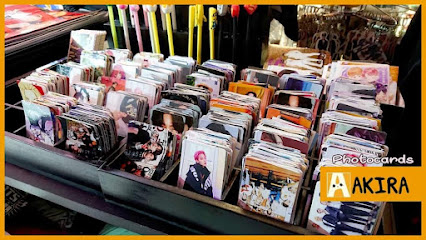
NL STORE AREQUIPA
Discover the vibrant fashion of Arequipa at NL Store, where local style meets modern trends in a chic shopping experience.

Galeria Artesanal TUMI DE ORO
Discover authentic Peruvian craftsmanship at Galeria Artesanal TUMI DE ORO, a vibrant shopping mall in Arequipa, perfect for unique souvenirs and gifts.
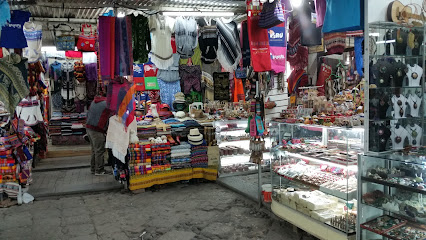
Ropa Urbana y Koreana
Explore the vibrant fashion scene at Ropa Urbana y Koreana, where urban style meets Korean trends in Arequipa's heart.
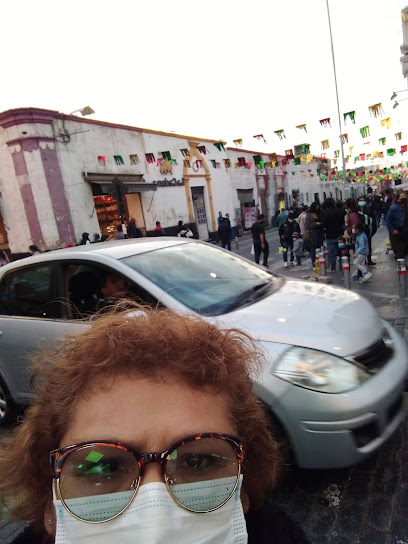
Tienda X ASIA
Explore Tienda X ASIA in José Luis Bustamante for unique Peruvian gifts and souvenirs that capture the spirit of the Andes.
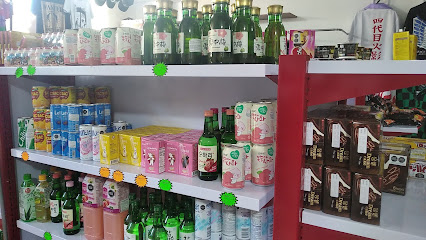
Leydi Stampa Arequipa
Discover unique Peruvian gifts at Leydi Stampa Arequipa, where local craftsmanship meets vibrant cultural heritage.

Quiksilver
Discover the vibrant surf culture at Quiksilver in Arequipa, where fashion meets adventure in a stunning coastal atmosphere.

Dulce Tentación Boutique Tienda Erótica Juguetes Adultos
Explore Dulce Tentación in Arequipa for a unique selection of lingerie and adult toys, perfect for enhancing intimacy and gifting.
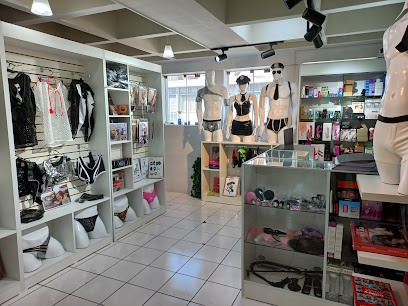
Tawaki
Discover Tawaki in Arequipa, a clothing store blending contemporary fashion with traditional Peruvian craftsmanship for a unique shopping experience.
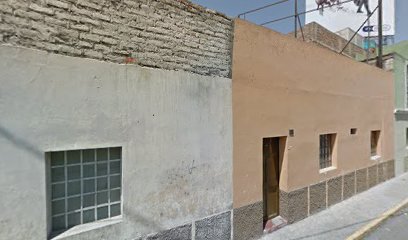
Essential bars & hidden hideouts
Museo del Pisco AQP
Discover the essence of Peru at Museo del Pisco AQP, Arequipa's premier cocktail bar and restaurant celebrating the nation's beloved spirit.
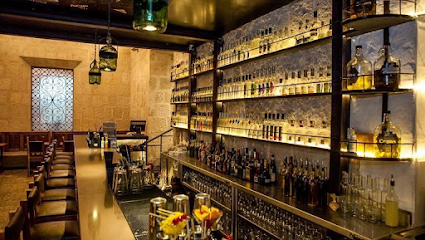
Chelawasi Public House
Experience the vibrant atmosphere and unique drink offerings at Chelawasi Public House, Arequipa's favorite bar and espresso haven.
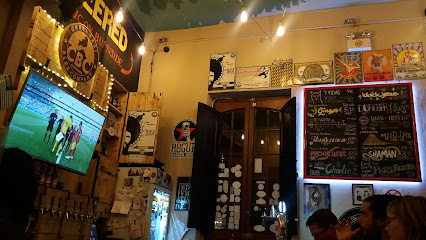
Frogs
Experience the vibrant nightlife of Arequipa at Frogs, a lively bar offering delicious cocktails, live music, and a welcoming atmosphere.
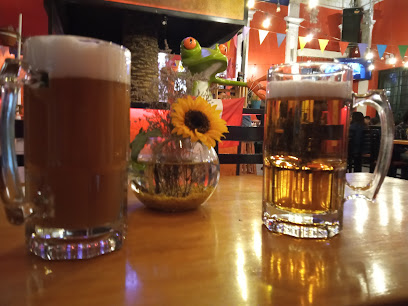
Qochamama
Discover the flavors of Arequipa at Qochamama, where exquisite grilled dishes and a lively bar atmosphere await every visitor.
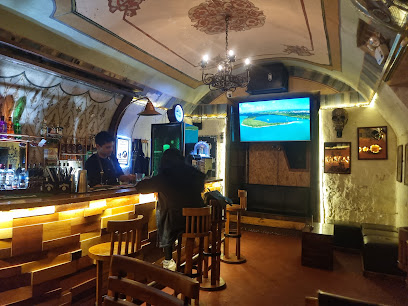
Nowhere
Discover Nowhere, Arequipa's vibrant brewpub offering craft beers and delicious food in a lively atmosphere perfect for relaxation and socializing.
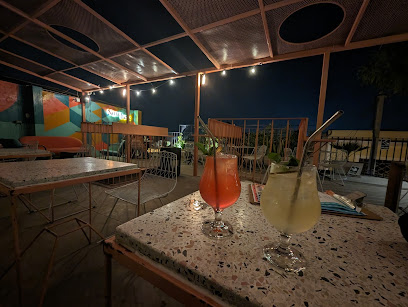
Carusso Restobar
Discover the vibrant nightlife and culinary delights at Carusso Restobar, Arequipa's premier destination for food and fun.
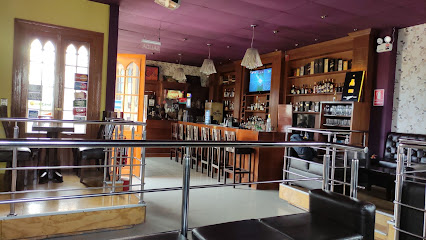
Farrens Irish BAR
Discover the vibrant atmosphere and delicious fast food at Farrens Irish Bar, a must-visit dining spot in Arequipa, Peru.
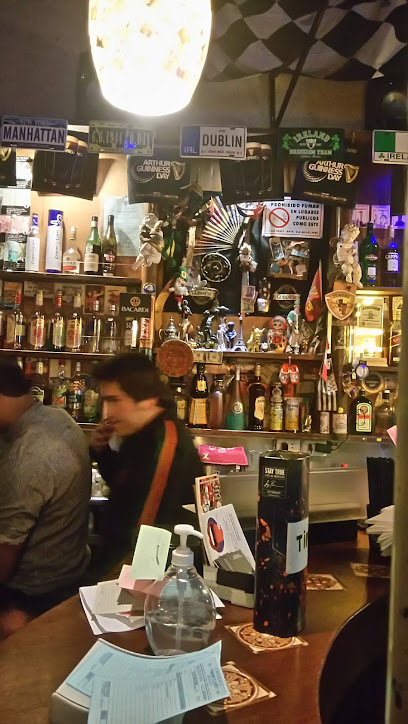
Mono Blanco
Discover the lively Mono Blanco bar in Arequipa, where vibrant nightlife meets delicious Peruvian flavors in a casual setting.
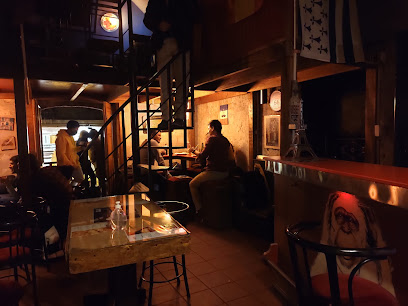
Peru Bar (pizzas & grill)
Experience the best of Peruvian cuisine at Peru Bar, where delicious pizzas and grilled delights await in a vibrant atmosphere.
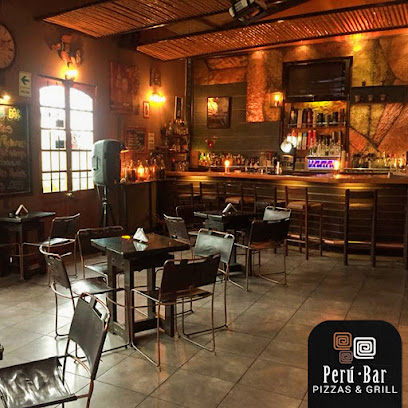
Sunset Rooftop Bar
Discover the captivating sunset views and delightful drinks at Sunset Rooftop Bar, the perfect spot to unwind in Arequipa.

Pataccala Bar
Discover Pataccala Bar: A vibrant tapas bar in Arequipa offering local brews and authentic Peruvian flavors in a lively atmosphere.
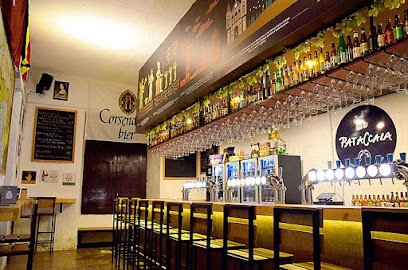
Melkim Draft Bar
Discover the vibrant atmosphere of Melkim Draft Bar in Arequipa, offering an exceptional selection of craft beers and live entertainment.

VOITON bar & live sports
Experience the thrill of live sports and delectable cuisine at VOITON Bar & Live Sports in Arequipa, where every game is a celebration.
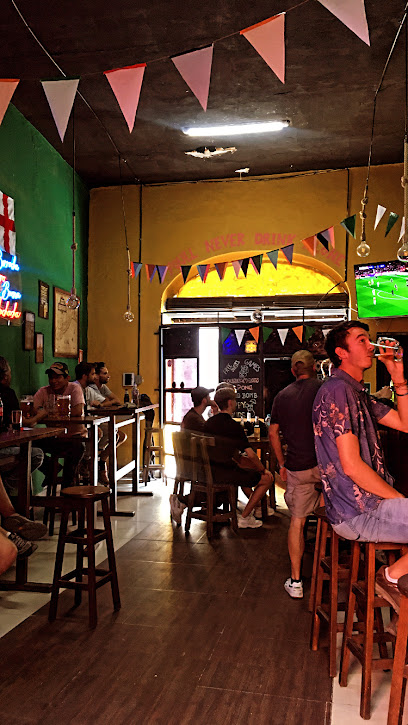
Melkim Taproom
Discover the vibrant beer culture at Melkim Taproom in Arequipa, offering a unique selection of craft brews and a welcoming atmosphere.
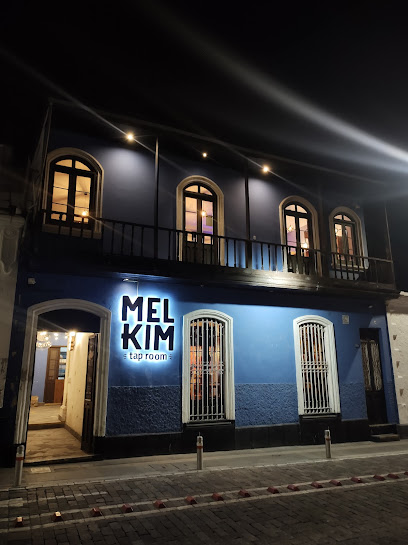
LUCKY AND CRAZY Beer and grill
Savor the vibrant flavors of Arequipa at LUCKY AND CRAZY Beer and Grill, where delicious grilled dishes meet a lively atmosphere.
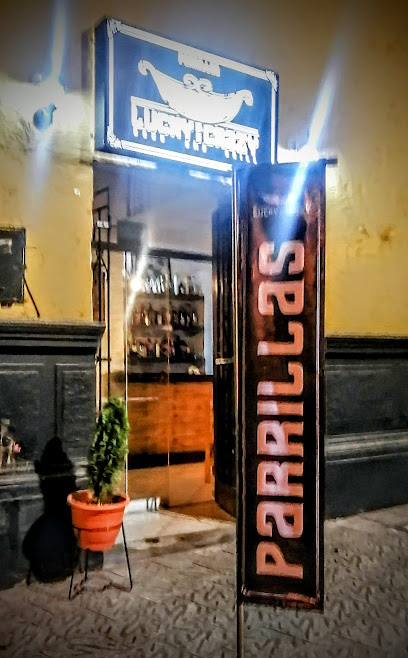
Local Phrases
-
- HelloHola
[oh-lah] - GoodbyeAdiós
[ah-dee-ohs] - YesSí
[see] - NoNo
[noh] - Please/You're welcomePor favor/De nada
[por fah-vor/deh nah-dah] - Thank youGracias
[grah-see-ahs] - Excuse me/SorryPerdón/Lo siento
[pair-dohn/loh see-en-toh] - How are you?¿Cómo estás?
[koh-moh ehs-tahs] - Fine. And you?Bien. ¿Y tú?
[byen. ee too] - Do you speak English?¿Hablas inglés?
[ah-blahs een-glehs] - I don't understandNo entiendo
[noh ehn-tyen-doh]
- HelloHola
-
- I'd like to see the menu, pleaseMe gustaría ver el menú, por favor
[meh goos-tah-ree-ah vehr ehl meh-noo, por fah-vor] - I don't eat meatNo como carne
[noh koh-moh kahr-neh] - Cheers!¡Salud!
[sah-lood] - I would like to pay, pleaseMe gustaría pagar, por favor
[meh goos-tah-ree-ah pah-gahr, por fah-vor]
- I'd like to see the menu, pleaseMe gustaría ver el menú, por favor
-
- Help!¡Ayuda!
[ah-yoo-dah] - Go away!¡Vete!
[veh-teh] - Call the Police!¡Llama a la policía!
[yah-mah ah lah poh-lee-see-ah] - Call a doctor!¡Llama a un médico!
[yah-mah ah oon meh-dee-koh] - I'm lostEstoy perdido/a
[ehs-toy pair-dee-doh/ah] - I'm illEstoy enfermo/a
[ehs-toy ehn-fehr-moh/ah]
- Help!¡Ayuda!
-
- I'd like to buy...Me gustaría comprar...
[meh goos-tah-ree-ah kohm-prahr...] - I'm just lookingSolo estoy mirando
[soh-loh ehs-toy meer-ahn-doh] - How much is it?¿Cuánto cuesta?
[kwan-toh kwehs-tah] - That's too expensiveEso es muy caro
[eh-soh ehs moo-ee kah-roh] - Can you lower the price?¿Puedes bajar el precio?
[pweh-dehs bah-har ehl pree-syoh]
- I'd like to buy...Me gustaría comprar...
-
- What time is it?¿Qué hora es?
[keh oh-rah ehs] - It's one o'clockEs la una en punto
[ehs lah oo-nah ehn poon-toh] - Half past (10)Y media
[ee meh-dee-ah] - MorningMañana
[mah-nyah-nah] - AfternoonTarde
[tahr-deh] - EveningNoche
[noh-cheh] - YesterdayAyer
[ah-yehr] - TodayHoy
[oy] - TomorrowMañana
[mah-nyah-nah] - 1Uno
[oo-noh] - 2Dos
[dohs] - 3Tres
[trehs] - 4Cuatro
[kwah-troh] - 5Cinco
[seen-koh] - 6Seis
[seys] - 7Siete
[syeh-teh] - 8Ocho
[oh-choh] - 9Nueve
[nweh-veh] - 10Diez
[dyehs]
- What time is it?¿Qué hora es?
-
- Where's a/the...?¿Dónde está...?
[dohn-deh ehs-tah] - What's the address?¿Cuál es la dirección?
[kwal ehs lah dee-rehk-syon] - Can you show me (on the map)?¿Puedes mostrarme (en el mapa)?
[pweh-dehs mohs-trar-meh (ehn ehl mah-pah)] - When's the next (bus)?¿Cuándo es el próximo (autobús)?
[kwan-doh ehs ehl proh-ksee-moh (ow-toh-boos)] - A ticket (to ....)Un boleto (a ...)
[oon boh-leh-toh (ah ...)]
- Where's a/the...?¿Dónde está...?
History of Arequipa
-
Arequipa was officially founded on August 15, 1540, by Spanish conquistador Garcí Manuel de Carbajal. The city was established in the fertile valley of the Chili River and named 'La Ciudad Blanca' due to its many buildings made from sillar, a white volcanic stone.
-
During the Colonial Era, Arequipa prospered as an important center for agriculture, mining, and trade. The city developed a distinctive architectural style, characterized by its baroque churches and colonial mansions, many of which still stand today. The Cathedral of Arequipa, built in the 17th century, is one of the finest examples of this period.
-
Arequipa has a long history of earthquakes due to its location in a seismically active region. Significant earthquakes struck the city in 1582, 1600, 1784, 1868, and 2001. Each time, the resilient population rebuilt the city, often improving the architectural designs to better withstand future quakes.
-
Arequipa played a crucial role in Peru's independence movement. The city was a hub for revolutionary activities and intellectual discourse. In 1821, Arequipa declared its independence from Spanish rule, contributing to the eventual liberation of the entire country.
-
The 19th century saw an economic boom in Arequipa, driven by the export of wool and other agricultural products. This period of prosperity led to the construction of new infrastructure, including the Arequipa-Lake Titicaca railway, which significantly boosted trade.
-
The University of San Agustin, founded in 1828, became a leading educational institution in Peru. The Arequipa School of Law and Medicine attracted students from across the country and contributed to the city’s reputation as an intellectual and cultural hub.
-
In 2000, Arequipa's historic center was designated a UNESCO World Heritage Site. The recognition highlighted the city's unique blend of indigenous and Spanish influences, its well-preserved colonial architecture, and its cultural significance in Peruvian history.
-
Today, Arequipa is a vibrant city known for its rich history, stunning architecture, and dynamic culture. The city's historic center, museums, and cultural festivals attract tourists from around the world. Arequipa continues to be an important economic and cultural center in southern Peru.
Arequipa Essentials
-
Arequipa is accessible by air and land. The Rodríguez Ballón International Airport (AQP) connects Arequipa with major cities in Peru and some international destinations. From Lima, the flight takes about 1.5 hours. Alternatively, long-distance buses connect Arequipa with cities including Lima, Cusco, and Puno. The bus journey from Lima takes around 16-18 hours. PeruRail also offers train services connecting Arequipa with other parts of the country.
-
Arequipa has a variety of transportation options. Taxis are widely available and relatively inexpensive; it's advisable to use registered taxis or taxi apps for safety. Public buses and combis (shared minibuses) are the most common forms of local transport, though they can be crowded. For exploring the city center, walking is a great option as many attractions are within close proximity. Car rentals are available but navigating the busy streets can be challenging.
-
The official currency in Peru is the Peruvian Sol (PEN). Credit and debit cards are widely accepted in hotels, restaurants, and larger stores, but smaller vendors may only accept cash. ATMs are plentiful in Arequipa, and it’s advisable to carry some cash for minor purchases or in case of technical issues with card payments. Currency exchange services are available at banks, exchange bureaus, and some hotels.
-
Arequipa is generally safe for tourists, but like any city, it has areas where caution is advised. The historical center and main tourist areas are usually safe, but avoid walking alone at night in poorly lit areas. Neighborhoods like Alto Selva Alegre and some parts of Cerro Colorado have higher crime rates. Always be aware of your surroundings, keep your belongings secure, and avoid displaying valuables.
-
In case of an emergency, dial 105 for the police and 116 for medical emergencies. Major hospitals in Arequipa include Hospital Regional Honorio Delgado and Clínica Arequipa. Pharmacies are widely available for minor health issues. It's recommended to have travel insurance that covers medical emergencies. The tourist police, located near Plaza de Armas, can assist with issues specific to travelers.
-
Fashion: Do dress in layers as the weather can vary significantly throughout the day. Don't wear overly revealing clothing, especially when visiting religious sites. Religion: Do show respect by dressing modestly and speaking softly in churches and religious sites. Public Transport: Do keep an eye on your belongings and be prepared for crowded conditions. Don't eat or drink on public transport. Greetings: Do greet people with a handshake or a friendly 'buenos días' (good morning). Don't ignore local customs of politeness. Eating & Drinking: Do try local dishes like rocoto relleno and chupe de camarones. Don't refuse food or drink offerings, as it can be seen as impolite.
-
To experience Arequipa like a local, visit the San Camilo Market for fresh produce and local delicacies. Explore the lesser-known neighborhoods like Yanahuara for stunning views and traditional colonial architecture. Engage with locals who are often friendly and eager to share their culture and history. Don't miss the vibrant festivals, such as the Virgen de Chapi pilgrimage in May. For a unique experience, take a stroll through the historic district at night to see the beautifully illuminated colonial buildings.
Trending Landmark in Arequipa
-
Plaza de Armas Arequipa
-
Yanahuara Scenic Overlook
-
Santa Catalina Monastery
-
Sabandía mill
-
Plaza de Yanahuara
-
Puente Grau
-
Chaqchao Chocolates
-
Mercado San Camilo
-
Tradición Arequipeña
-
Tipika Tourist Restaurant
-
Zig Zag
-
Chicha por Gaston Acurio
-
Cloisters of The Company
-
Basilica Cathedral of Arequipa
-
Mundo Alpaca
Nearby Cities to Arequipa
-
Things To Do in Puno
-
Things To Do in Tacna
-
Things To Do in Copacabana
-
Things To Do in Arica
-
Things To Do in Cusco
-
Things To Do in La Paz
-
Things To Do in Machu Picchu
-
Things To Do in Iquique
-
Things To Do in Ayacucho
-
Things To Do in Ica
-
Things To Do in Cochabamba
-
Things To Do in Huancayo
-
Things To Do in Uyuni
-
Things To Do in Potosi
-
Things To Do in Sucre






